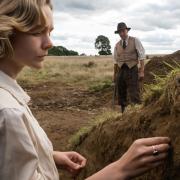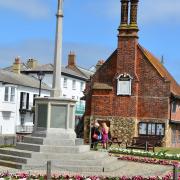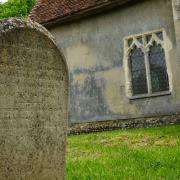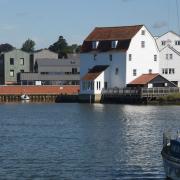Visiting Lowestoft? Did you know it was once dubbed the ‘Queen of Watering Holes’? And why does it have two piers?

Back in the days when Victorian modesty prevented our earliest holiday makers from baring all on the beach, Lowestoft’s lure of “the most invigorating air in the British Isles”, and a few almost equally modest attractions, were enough for paddlesteamer-loads of passengers to disembark at South Pier.
The goat-cart rides, phrenologists’ booths, concert parties and that pier’s impressive, penny-admission Reading Room may all be long-gone, but it’s surprising what delightful flights of fancy you can still find if you go for a gentle gander around England’s most easterly resort with eyes wide-open.
1: Sparrow’s Nest Park has to be the perfect place to start. Tucked away in the cliffs of old town Lowestoft, just a gull’s glide from the sea, it’s a secret, wooded gem of a garden, created to celebrate Queen Victoria’s Diamond Jubilee in 1897. Gaze up from near the bowling-green and Lowestoft’s iconic beacon, what is believed to be Britain’s oldest established coastal lighthouse still in use looks out above the Park’s tree-green topsail like a bright-white crow’s nest.

However, the name of this most easterly spot, where England’s dawn chorus starts first, is regrettably a bit of a red herring as it recalls former owner and Lifeboat Society founder, Robert Sparrow Esq.
2: Fly the Nest and continue the climb, past the disused Art Deco entrance to the tennis courts, to Belle Vue Park which immediately proves true to its name. The golden galleon topping the Royal Naval Patrol Memorial has to be Lowestoft’s loftiest perch. The town’s first formal park and ornamental gardens (1874), originally known as Arboretum Hill, Belle Vue is a restful place where tall trees extend a welcome to weary little migrating birds and provide welcome shade for gentle seaside strollers. The thatched gardener’s cottage is charming too, but surely just as fanciful as tales of the nearby ‘witches stones’ winging their way down to sea at midnight for a wash!

3: Keep on the clifftop towards town and those with a beady eye for architectural shenanigans will love trying to piece together the history of the High Street with its deep-cut ‘scores’, or ancient alleyways, leading down towards the sea. Amidst pinnacles, pediments and a bizarre ‘Armada’ post, elegantly styled Victorian shopfronts, flinted or jettied façades and even the occasional Adam doorway, something rather unexpected has recently flown in at No 176 on the corner of Camden Street.
4: Bold, beautiful and an awesome street-art addition, ATM’s barn owl mural is one of a handful of painted nature works around Lowestoft and Oulton Broad celebrating exciting wildlife habitat creation projects at Carlton Marshes. In Georgian times souvenir-seeking seaside visitors pottering about here often purchased ‘trifles’ from the nearby eminent, but short-lived Lowestoft Porcelain factory. George II even stayed here, reputedly flying up Rant Score to take refuge from a storm.
Today, look down that little lane and there are some interesting bird’s eye views, towards Lowestoft’s on-shore wind-turbine ‘Gulliver’, to The Ness, Lowestoft’s newest park, and a frozen foods factory, sporting the badge of Captain Birdseye himself.

Find your fabulous staycation cottage in Suffolk
5 & 6: Head now for Station Square to spot a kingfisher at No 11 – another mural on the Carlton Marshes trail – and five Bewick swans in flight in Charles Normandale’s ‘Spirits of Lowestoft’ sculpture, then swoop over towards South Pier’s Heritage Quay across the bascule bridge.

7: Lowestoft was dubbed ‘The Queen of Watering Holes’ by the Victorians, a place where Sir Samuel Morton Peto left his mark. The entrepreneur and civil engineer – and for more than 20 years an MP – was a partner in the firm of Grissell and Peto, and managed construction firms that built many major buildings and monuments in London, including The Reform Club, The Lyceum, Nelson’s Column and the new Houses of Parliament. As a partner in Peto and Betts, he became one of the major contractors in the building of the rapidly expanding railways of the time.
In 1844, Peto bought Somerleyton Hall and when he also bought up Kirkley farmland in the mid-1800s, he planned a resort to rival Brighton. He built the railway, developed the port, created harbour basins, hotels, villas and terraces, put the place on the British bathing resorts map and left the rest to history. Over the years the storms of war and weather, the shifting tides of time and fashion have seen the need for much remodelling, but traces of his original elegant vision are still very much in evidence.

8 & 9: Look up, and by the entrance to South Pier, there’s sure to be a seagull standing on Triton, an 1850 sculpture by John Thomas, one of Peto’s mates from Houses of Parliament building days. You’ll find more evidence of Thomas’ work around recently restored red-and-white brickwork doorways by Peto’s fine parade of terraces. Claremont Pier was a new landing stage to entice flocks of Edwardian visitors, but behind it turreted villas like ‘Ashurst’ (1864) recall the style of South Pier’s long lost, three-storey reading room.
10: On Kirkley Cliff, there are more charming moments of sheer thatched folly and Art Deco overtones near the curvaceous 1930s terrace of beach chalets by Victoria prom. But 1920s Kensington Gardens is perhaps the place to land a while. Sadly, its aviary is no more, but its trees are all a-twitter and moorhens mooch about the rockery pond in its Japanese Garden. Surely another of Lowestoft’s best-kept secrets?

11: But there is one final secret to discover, well worth an extra seaside stroll. Follow the clifftop road around the coastal corner to set eyes on a rural beach where the prom gives way to Pakefield. Here is the thatched, beach-side All Saints’ & St Margaret’s, two churches in one. Here, on a breezy day, you may be lucky enough to see red kites flying high.
But when the sea-air is still and you stand amidst the sea lupins before the countryside cliffs of the bay, you might just hear the precious song of a lark ascending. Now that surely takes any gentle day-out by Lowestoft’s heritage coast to unexpected new heights.



























